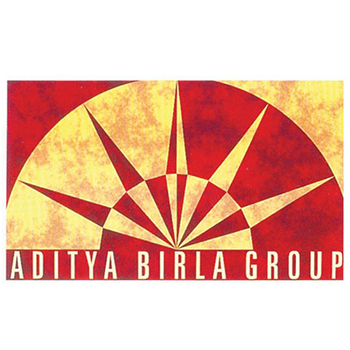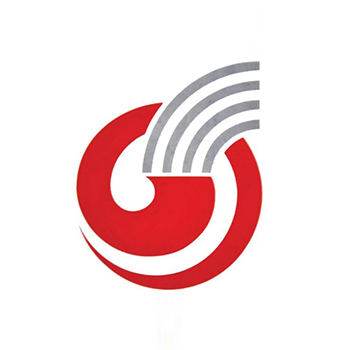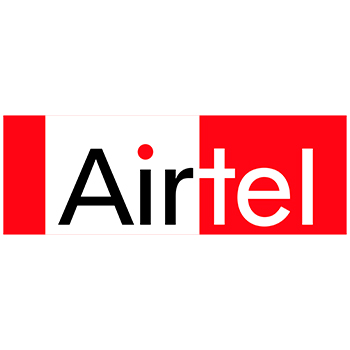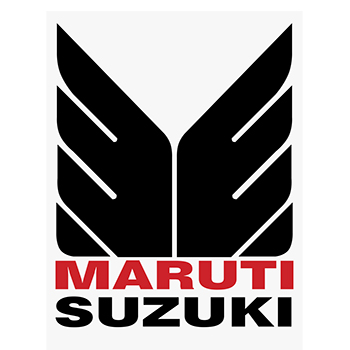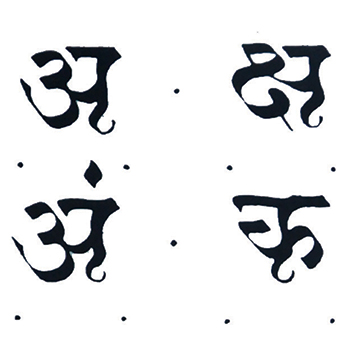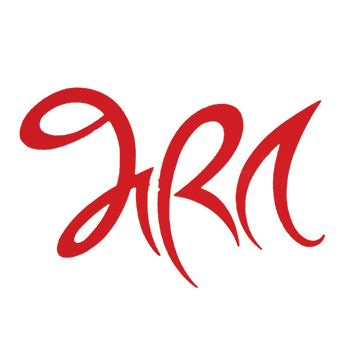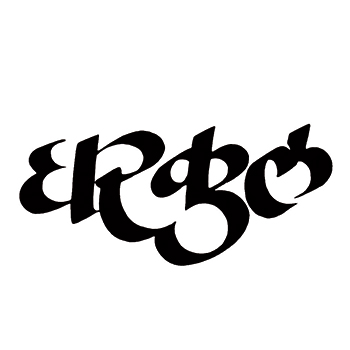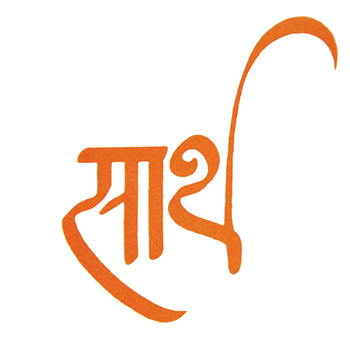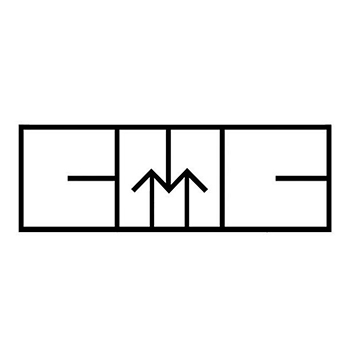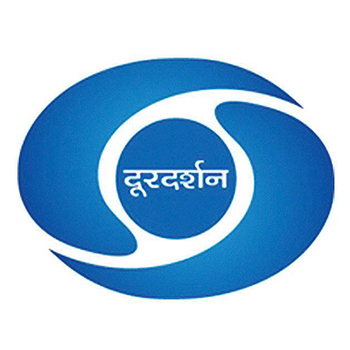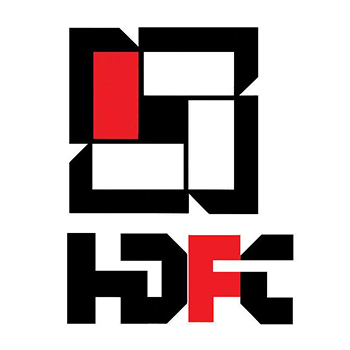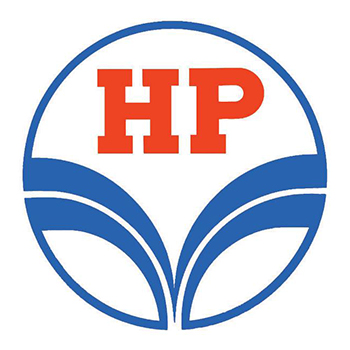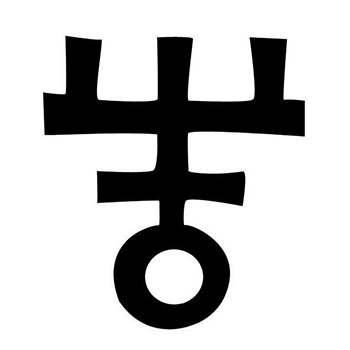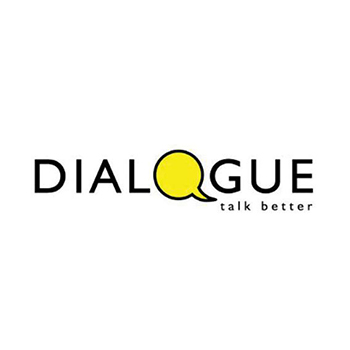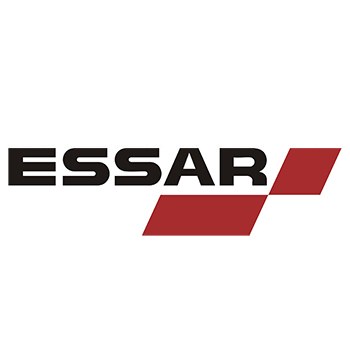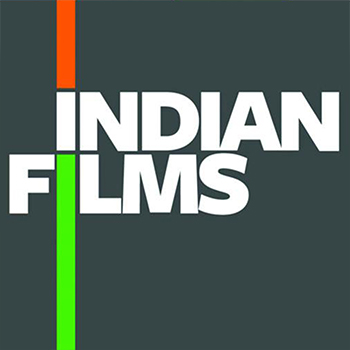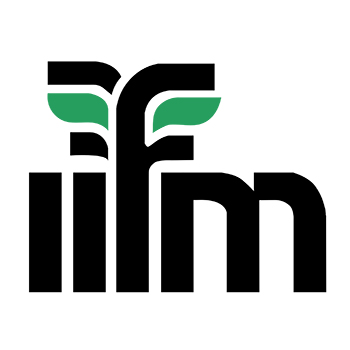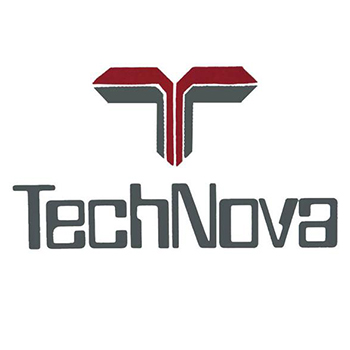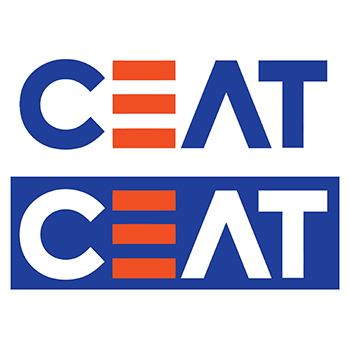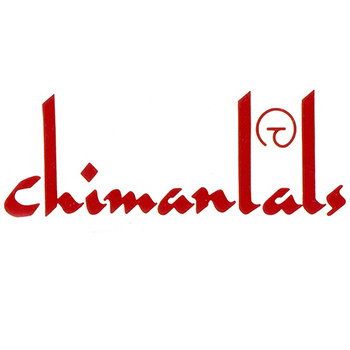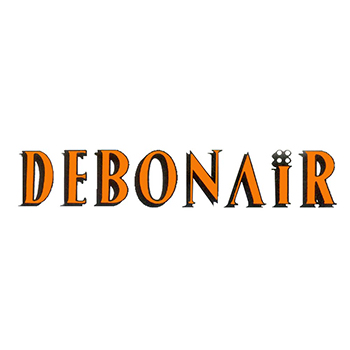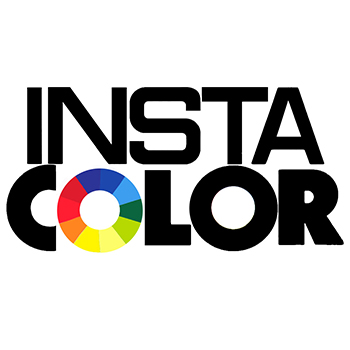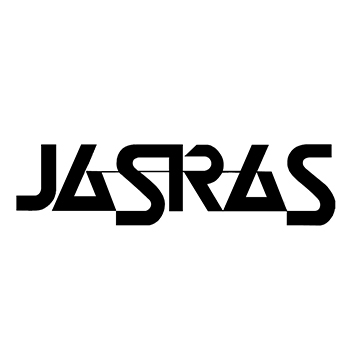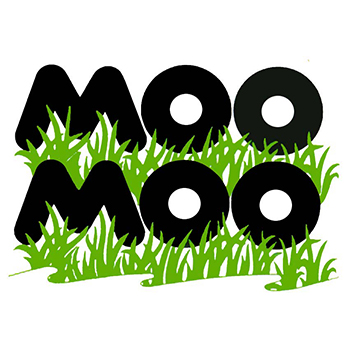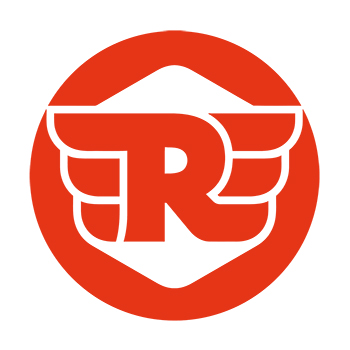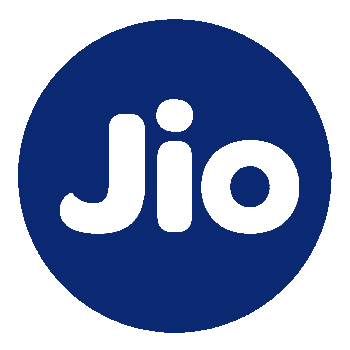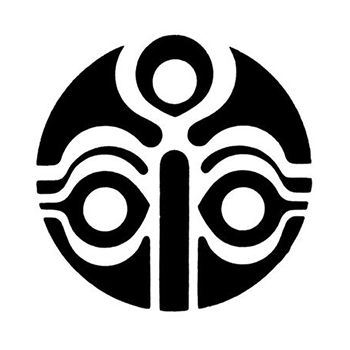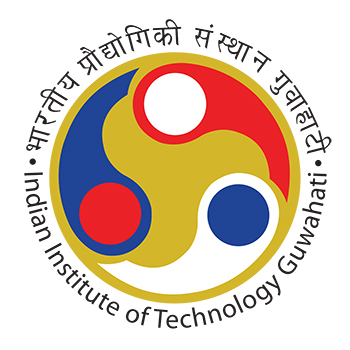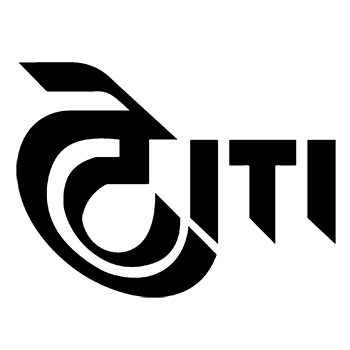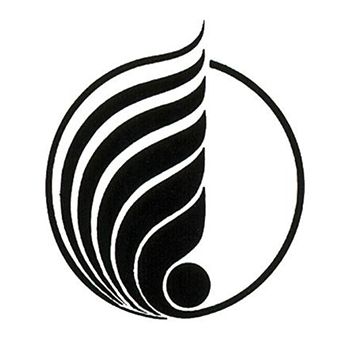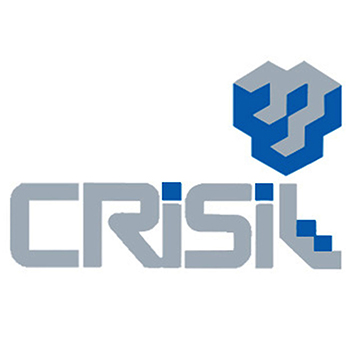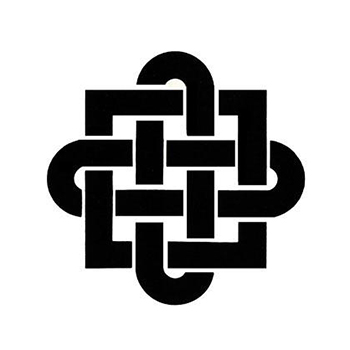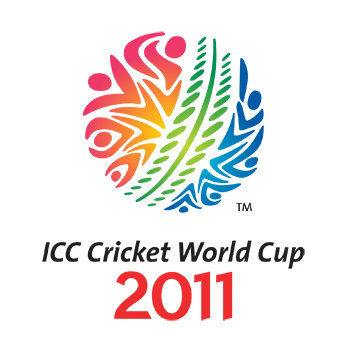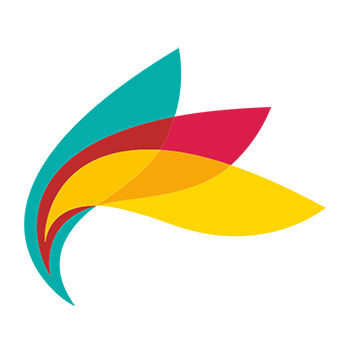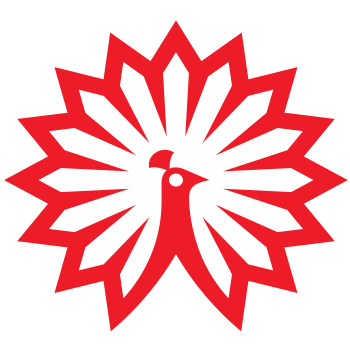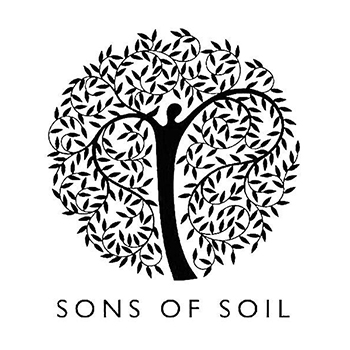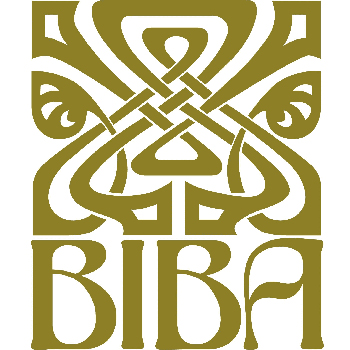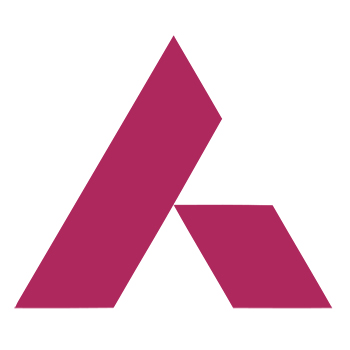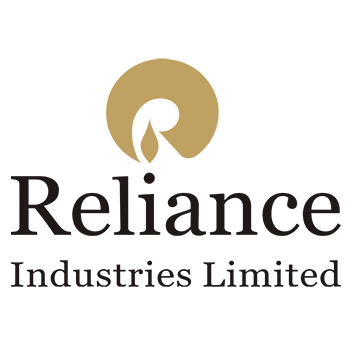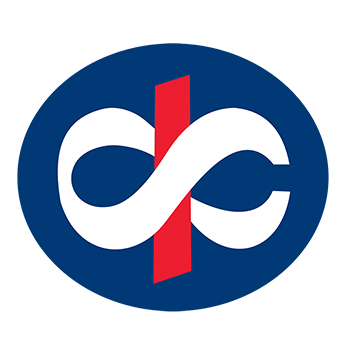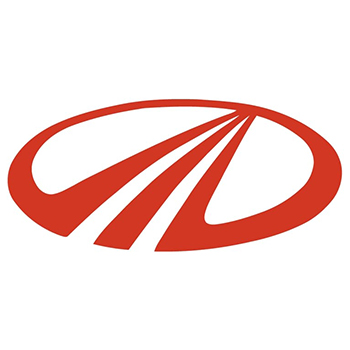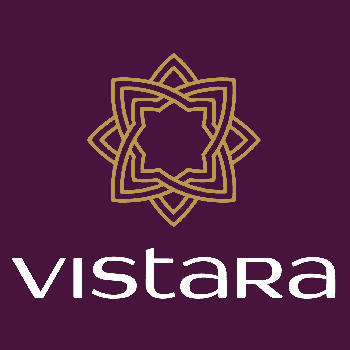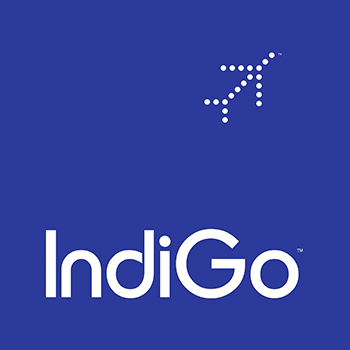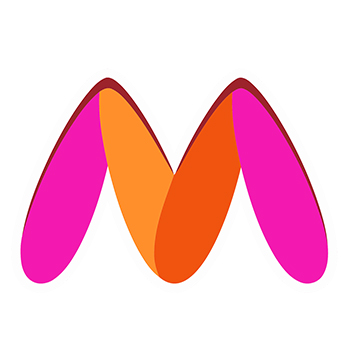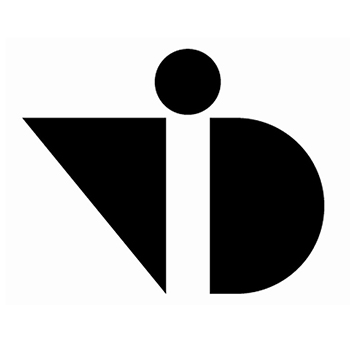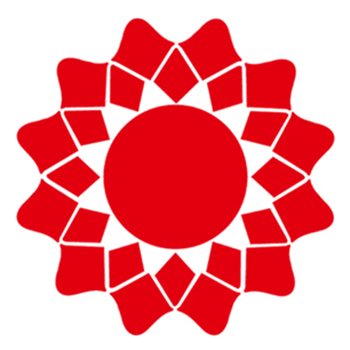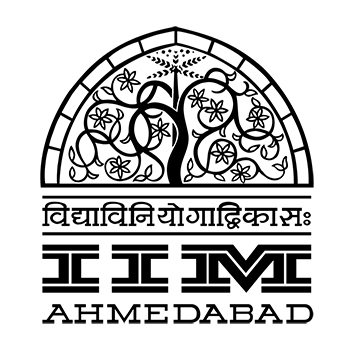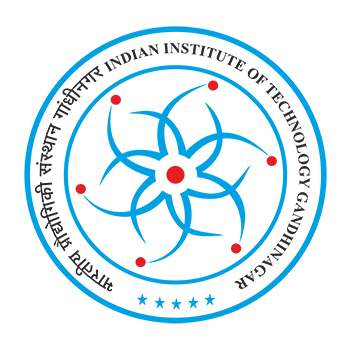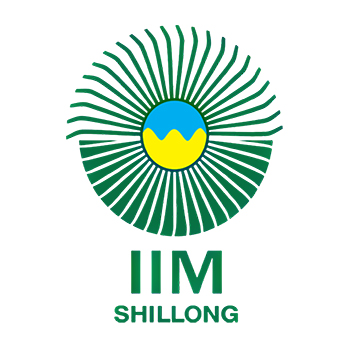Graphic Logos
Erstwhile Logos Of India
(13 items)
Erstwhile Logos in Calligraphy
(12 items)
Classic Logos of India
(12 items)
Typographic Logos of India
(12 items)
Typographic Logos
(14 items)
Logos Representing India
(12 items)
Graphically Interesting Logos of India
(13 items)
Contemporary Logos
(24 items)
Institution Logos
(9 items)
Graphic Logos
Erstwhile Logos Of India
(13 items)
Aditya Birla Group
Vyas Gianetti Creative
Vyas Gianetti Creative
The idea behind the form of the logo is the ‘Rising Sun’ signifying rising business, vision and Aditya Birla Groups architecture as a strong brand against other competitors. The combination of deep Indian Red with the golden yellow flamed up tone in the facets of the sun rays seals the concept and Aditya Birla’s shining repertoire with vibrance, richness and over-powering visual. The new logo is the same form and colour unit, but with an enhanced warmth. The modern, bold typography in the group name signature of the logo compliments the increasing strength of the group in present times.
Details >>Bajaj Auto
Unknown
Unknown
Bajaj Auto (BAL) - Launched as M/s Bachraj Trading Corporation Private Limited in 1945, it received government’s licence much later in 1960 to manufacture two and three-wheelers for Indian Auto market. Henceforth, it became Bajaj Auto Limited (BAL).The ubiquitous hexagonal Bajaj logo elucidated the two-wheeler and three-wheeler product range of the company. The hexagonal form of the logo makes it a compact, harmonious unit that confirms the underlying USP of Bajaj brand - “Buland Bharat ki Buland Tasveer….. Hamara Bajaj”. In english, it meant ‘Strengthened (cultural context) India’s Strong Image….. Our Bajaj’. Hence, the hexagon beautifully encaptures the multi-dimensional spirit of India’s culture and ideology.
Details >>Crompton Greaves Consumer Electricals Limited
Unknown
Unknown
Crompton and Greaves - The old logo was designed in late 60s when the government sealed the name ‘Crompton Greaves Limited’ (as a conglomeration of Greaves Cotton and Crompton Parkinson Limited. The old logo presenting the initials C and G interlocked inside a box appear like a trademark standing for the company’s finished electrical products, systems and maintenance of an industrial productivity and sustenance through quality. The interlocking of the two letters signifies the strong bond of trust and reliability which Crompton Greaves has fulfilled since 1937.
Details >>CEAT (company)
R. K. Joshi
R. K. Joshi
The simple rhombic shape showcasing CEAT was designed in 1983 by Late Prof. RK Joshi. The erstwhile form signified performance, style, strength and durability of CEAT Tyres. The tag line Born Tough extended the significance of the logo further. The two triangles bracketing the word CEAT marks its exclusivity among tyre brands of early 80s when CEAT emerged as one of its first kind. The simple bold letters of CEAT establish a premium position of the products in the market then. CEAT now has a new logo having bold, more geometric characters with simplified lines showing changing perception of speed and mobility of tyres in present era
Details >>Fevicol
M. Swaminathan
M. Swaminathan
Since 1959, Fevicol has been giving consistent quality of adhesives. The breakthrough came in ‘70s with launch of a 30 gm. collapsible tube for use by school students and other professionals. The brand concept of using elephants trying to break the Fevicol ka jod (fevicol bond – a tagline in the ever-creative ad commercials by O&M), retains the Indian way of creating humor and establishing the strength of product feature. The concept of eternal ‘Bonding’ has created such a strong equity for the brand, that now people ask for Fevicol and not other adhesives. Similarly, the typography of the word Fevicol seamlessly bonds the letters together.
Details >>Hindustan Unilever
Ray + Keshavan
Ray + Keshavan
Hindustan Lever came into existence in 1956, launcing the logo in the same year itself. The erstwhile logo signified stability and a robust image for the company. The use of bold typography in letter ‘H’ having a foundation of a steady effect of an angular, growing leaves (letters LL depicted) has a strong recall with added clue of ‘Hindustan’ word.The dark green colour of the logo leads to an evergreen appeal in the visual, that has high recall value even in current times. With new merger, the company became Hindustan Unilever Limited in June 2007. The new logo acquires a new visual treatment of using 25 icons (signifying the organization, brand and its new theme of vitality) inside the letter ‘U’. The idea of single-letter identity has been reused, but with a new graphic treatment celebrating the concept of ‘versatility’ and ‘vitality’ as the company’s new brand image in the current times.
Details >>ICICI Bank, Bombay Branch
Sudarshan Dheer
Sudarshan Dheer
Founded in 1994, ICICI bank and its services have been beautifully presented by the forms on the logo. The circular spiral represents the revolutionary efforts to create great investment banking, insurance, venture capital and investment management schemes. The glory of the revolution has been depicted as an emerging flame of lines, moving upwards with a confidence of growing with course of time, depict the increasing reach of bank services not only in India but overseas
Details >>India Post
R. K. Joshi
R. K. Joshi
The corporate logo of India Post was first launched on India Post Day, 9th Octuber 1993. It represented speedy action and dynamism. The logo also shows the skill and good sense of aesthetics in form of an appealing asymmetric balance in the form. The form is an envelope, the straight parallel lines with sharp angular ends represent the speed with which the postal India services transfers posts across the length and breadth of India. The colour Red signifies the depth of its reach in India. Red adds extra prominence to the speed concept of postal services for which the logo stands for.
Details >>Indian Airlines
Benoy Sarkar, NID
Benoy Sarkar, NID
Flying in the Air has been man’s greatest wish and an obsession since the advent of aeroplane. The connection could also be seen in images of winged Gods, Goddesses and other mythological figures. In 1932, JRD Tata started the airlines, the national flag carrier airlines of India. With 147 airliners serving 95 destinations, Tata airlines was rapidly developing the business. But, initially the Tata Tag itself served as a corporate symbol for the aircrafts. The logo was developed post 1946 (World War II). The Typographic beauty with a simple sliding crossbar of the letter ‘A’
Details >>Airtel
Ray + Keshavan
Ray + Keshavan
The erstwhile logo symbolically shows a mobile phone. The screen depicts the word ‘Air’ connected to the red body presenting ‘Tel’ (the network that suits your ‘Tel’ – phone). To seal the unity of red with white the red dot of ‘i’ creates a perfect balance. The communication is direct and convincing. The alternating red and white bars lead to it being popularly known as a flag logo in the advertising circuit. From typographic point of view, a clean, upright and confident character style adds to the simpilicity and elegance of the logo.
Details >>Kissan Products
Sudarshan Dheer
Sudarshan Dheer
The logo effectively captures the ethos of the company and its products, applied harmoniously across complete product range of Kissan. The quality of Kissan products have created a strong image for the brand. The logotype ‘Kissan’ exudes the same quality of superior product features that all its products provide with. The letter ‘K’ represents tongue and the palette (the two sensory organs giving us the ability to taste food). The action of applying Jam on toast has been the inspiration to churn out an iconic form of the curve, placed beneath the logotype to give it a formal balance.
Details >>Maruti Udyog Limited (now known as Maruti Suzuki Private Limited)
Ramesh Mule, Rediffusion Ad Agency
Ramesh Mule, Rediffusion Ad Agency
The logo was designed when Maruti Udyog Limited was launched in 1981. It was created to signify an efficient public transport system in India. According to the automobile industry records, only two companies made cars in India, namely Premier Automobiles Limited and HM (Hindustan Motors). However, in 1983, the entry of MUL (Maruti Udyog Limited) revolutionized the car market scene in India. The Typographic symbol as letter ‘M’ having the texture of tyres inside the form signify Maruti’s traditional theme of providing good quality cars with latest technical aspects and durability. Briefly, the symbol communicated a ‘value for money’ feature of Maruti cars. Recently, Maruti has been trying to transform its old image of a small, compact cars to more aggressive appeal. With the failure of Maruti Baleno due to competition in the market, Maruti Udyog has now become ‘Maruti Suzuki’ (a joint venture between Udyog and Suzuki Corporation Limited) of Japan.
Details >>MindTree
Siegel+Gale
Siegel+Gale
Mindtree is an Indian multinational information technology company headquartered in Bangalore. It was founded on 18 August 1999. A youngster from Karnataka, who has physical disabilities created the company's first logo. On September 28, 2012, Mindtree unveiled a new logo and brand identity that were created by Siegel+Gale. The bright colours red, yellow, and blue used in the MindTree logo make it particularly attention-grabbing. The graphic identity of MindTree embodies the DNA of the company: inspiration, activity, and joy. The blue upward sweep represents boundless invention. Action is represented by the red background, while happiness is represented by the yellow dots. Chetan, a member of the Spastics Society of Karnataka, created this logo. Chetan has discovered that his cerebral palsy does not limit his smart, imaginative intellect.
Details >>Erstwhile Logos in Calligraphy
(12 items)
Aakar : The Quest for Perfect form
Sudarshan Dheer, Graphic Communications Concepts
Sudarshan Dheer, Graphic Communications Concepts
This logo was designed for Aakar: The Quest for Perfect Form by Sudarshan Dheer.
Details >>AKSHAR ANKAN - Art Exhibition held in Sophia College of Art & Design, Mumbai
Santosh B. Kshirsagar
Santosh B. Kshirsagar
This logo was designed by Santosh B. Kshirsagar for the "AKSHAR ANKAN: Art Exhibition’ logo held at the Sophia College of Art & Design, Mumbai.
Details >>Akanth Magazine identity (Publication)
Achyut Palav
Achyut Palav
This logo was designed by Achyut Palav for the Akanth Magazine identity (publication).
Details >>Assa Publications
Santosh B. Kshirsagar
Santosh B. Kshirsagar
This logo was designed by Santosh B. Kshirsagar for Assa Publications, Mumbai.
Details >>Bharat Woolen House (Textiles)
Aay’s Advertising
Aay’s Advertising
This logo was designed by Aay’s Advertising for Bharat Woolen House (Textiles).
Details >>Dharakul Magazine
Ravimukul
Ravimukul
This logo was designed by Ravimukul for Identity for Dharakul Magazine, "Bharat Vishesh Prakaashan," Mumbai.
Details >>International Shibouri Symposium, NID Ahmedabad
R. K. Joshi
R. K. Joshi
This logo was designed by R.K. Joshi for Identity for Identity for ‘International Shibouri Symposium’, NID Ahmedabad.
Details >>Indira Gandhi National Centre for Arts, New Delhi
R. K. Joshi
R. K. Joshi
This logo was designed by R.K. Joshi for the Indira Gandhi National Centre for Arts, New Delhi.
Details >>Nehru Centre Art Gallery, Mumbai
Santosh B. Kshirsagar
Santosh B. Kshirsagar
This logo was designed by Santosh B. Kshirsagar for the Nehru Centre Art Gallery, Mumbai.
Details >>Resha Graphic Designers
Shishupal Panke
Shishupal Panke
This logo was designed by Shishupal Panke for Resha Graphic Designers.
Details >>Saarth Prakaashan (Publishing)
Ravimukul
Ravimukul
This logo was designed by Ravimukul for Saarth Prakaashan (Publishing).
Details >>Shabdvel Prakaashan (Publishing)
Ravimukul
Ravimukul
This logo was designed by Ravimukul for Shabdvel Prakaashan (Publishing).
Details >>Classic Logos of India
(12 items)
Airport Authority of India
Unknown
Unknown
Designed in early 1990s, the logo for Airport Authority of India has a symbolic graphic depiction. The use of triangular form and the wings of an airplane together as a form instantly makes connections with airports. The upward accent of the triangle depicts the vision of AAI. The vision being to upgrade, develop, maintain, manage civil aviation in India.
Details >>Computer Maintenance Corporation (CMC)
Arun Kolatkar
Arun Kolatkar
The logo for the information technology, services and software company (now known as CMC Limited) was designed in 1975. The logo depicts the concept of integrated systems engineering as a unit. The geometric shapes forming letters C, M and C express the image of information technology, integrated services and modern engineering in a simple and effective way. The upward arrows creating the visibility of letter ‘M’ compliments the word ‘maintenance’. The geometric square used to create joined letterforms makes the logo a balanced, harmonious unit concept. The form is minimalistic, but at the same time follows the principle of ‘less is more’.
Details >>Doordarshan
Devashis Bhattacharya
Devashis Bhattacharya
Born on September 15, 1959, the logo celebrated the first launch of program broadcasting in India. It is believed that around 180 TV sets were sold in 1959 (the year when television came to India). The design emerged from the hands of a visual communication student at NID, as part of a classroom exercise to create logos. Doordarshan was considered one of the largest broadcasting organizations in the world in terms of studios and transmission development. The classic form elucidates the identity that stands firmly till date.
Details >>HDFC
Yeshwant Chaudhary
Yeshwant Chaudhary
The characteristic logo for Housing Development Finance Corporation Limited came into being in 1977, with the company’s aim to provide long-term financial loans for home ownership. The geometric design of the logo in simple colours of black, white and red make it strong as a symbol. The letters H.D.F.C. also following the same geometric style, placed below the logo unifies the concept of housing loans. Security, preservation and trust are the words that come to mind while viewing the logo. It also encaptures the objective of HDFC as a professional service that aids support to people of India with integrity.
Details >>Hindustan Petroleum
Sudarshan Dheer
Sudarshan Dheer
Designed in 1974, the logo for Hindustan Petroleum Corporation Limited (HPCL) celebrates the “Club HP” concept i.e. High-quality personalized “Vehicle and Consumer Care”. The slogan Future full of energy complements the design of curved lines joining together like a stream of energy fuel being poured into the vehicle. The visual forms connect with the concept instantly. Additionally, colours of Red used the bold initials HP with blue circle and lines provide clear combination, reasonable contrast between letters and shape giving the logo a marked elegance. The symmetry makes the form balanced and simple.
Details >>Welcome Group, ITC Hotels
R. K. Joshi
R. K. Joshi
The design was a mark of extension of ITC to hotels in 70s. Surrounding the theme of ‘truly Indian’, ITC gave the name of ‘Welcome group’ to its chain of hotels. The letter W beautifully envisages the ethos of Namaste (the Indian traditional gesture of expressing ‘Welcome’). Conceptually, the form elucidates a universal form to accommodate India that unifies different cultures and religions as one whole.
Details >>Operation Flood Symbol for National Dairy Development Board (NDDB)
Vikas Satwalekar, NID
Vikas Satwalekar, NID
The drop logo symbolizes the Operation Flood movement started by Verghese Kurien for National Dairy Development Board (NDDB). The White Revolution changed the face of dairy functioning in India, giving livelihood to thousands of milkmen in Anand. The timeless simplicity of the drop signifies the value of milk, its sustenance by and for people of India, making India the largest producer of milk in the world.
Details >>Punjab National Bank (PNB)
R. K. Joshi
R. K. Joshi
Designed in 1984 , the design with letter captures the ethos of the letter in Gurmukhi to conceptually complement Punjab National Bank (PNB). The orange colour also compliments the Indian ethos and traditional image. The Gurmukhi letterform enclosing a circle compliments the identity of PNB as a nationalized bank (system of the bank under the control of government).
Details >>SBI
Shekhar Kammat, NID
Shekhar Kammat, NID
The logo for State Bank of India, India’s largest commercial bank was designed on 01 October 1971. As an initial response to the circle form with an open hole, it looks like a key-hole. But, the real concept behind the design being that the circle encloses a common man inside at its centre. The common man represents the centre of the bank’s business. The circle signifies the service of trust, security and perfection for the common man. Moreover, the slogans With you all the way and The banker to every Indian support the idea of serving the common man as the epicenter of its activities. This logo is a unique example of how to create a quality of a concept with most basic geometric form of design i.e. the circle.
Details >>Steel Authority of India Limited (SAIL)
R. K. Joshi
R. K. Joshi
The logo for the largest integrated Steel and Iron producer, SAIL was designed in 1973. SAIL has laid a sound infrastructure for the industrial development of the country with its integrated steel plants. The symbol using the triangular form with an upward direction indicates growth and development of steel industry. The solid rhombus used enclosed within the triangle seems to agree with the fact that SAIL stands to infuse high level technical and managerial expertise.
Details >>TITAN
Sudarshan Dheer
Sudarshan Dheer
The logo was designed in 1987 with the joint venture of Tata Group and Tamil Nadu Industrial Development Corporation (TIDCO) to form TITAN Industries. TITAN exports watches, accessories and jewellery in both modern and traditional style designs. The most attractive aspect of the logo is the play with letter ‘T’ creating a circular hallow around it. The form reminds of a watch dial and the internal parts of its machinery. Simple and elegant in form, the logo beautifully elucidates the traditional ethos and modern identity of Titan products.
Details >>Trade Fair Authority of India (now called ITPO – India Trade Promotion Organisation)
Benoy Sarkar, NID
Benoy Sarkar, NID
Trade Fair Authority of India (now called ITPO – India Trade Promotion Organisation), Designer: Benoy Sarkar, NID : The logo was designed in 1974, when government of India initiated in the area of external trade. The logo has an interesting depiction of letters T and F. Thetone is a fusion of preservation of traditions of Trade and investments along with modern identity of ITPO. The logo has a universal form. It signifies an authority of India exercising trade through fairs and exhibitions in India and abroad.
Details >>Typographic Logos of India
(12 items)
Dialogue
PALASA
PALASA
A Communication and Personality Development Outfit, ‘Dialogue’ as the name suggests ‘Talk Better’ (that is also the main tagline of the logotype). The speech blurb (‘O’ in the name identity) opens up a conversation channel for effective and easy interaction. The yellow of the speech blurb brings in a kind of ‘youthful freshness’ as well as an urgency to establish dialogue between the service providers and the clients.
Details >>ESSAR Group of Companies
Sudarshan Dheer
Sudarshan Dheer
Way back in 1960s, the Essar Group’s logo type and mark tosthere firmly establish the Group’s philosophy of growing with innovative approach in the areas of service businesses, annuity and commodity investments. The Uppercase used to depict ESSAR logotype gives a strength and impact to its image as a global entrepreneur – a diversified business corporation with a balanced portfolio of assets in the manufacturing and services sectors of Steel, Oil and Gas, Power, Communications, Shipping ports and logistics, and Construction. The Gripu is active in seizing opportunities to expand their reach. Hence, the joined horizontal bars in intense red elaborates the reach and efficieny factor of the group.
Details >>Himalaya
Ray + Keshavan
Ray + Keshavan
Established in 1934, the Himalays Drug company is well known for a wide range of herbal therapeutic and personal care products. The makeover logo design revolved around the three-tier concept of tying all brand touch-points from packaging to marketing, collaterals, retail and web presence. The orange cross-bar leaf form of the capital ‘H’ of the name identity presents the trustworthy, pure and Indian inception of the herbal and personal products. The orange and green bring fervour, healing power nature’s resources attached with it various brand touc-points. The simple and clean typeface unifies with the said inception and produces a very legible, convincing and positive logotype (with an amost universal appeal visually).
Details >>Indian Films
Ray + Keshavan
Ray + Keshavan
Indian Films are the first traded film company, with the main objective of investing in Indian films made primarily for the Indian audience. The expression given to ‘I’ in the name symbolically represents the tricolour – mark of India (its heritage and philosophy). The vertical ascending and descending extensions in the saffron and green hues of the tricolour with the white sitting comfortably between the two bands – creates a subtle feel of ‘moving reel’. There’s a moving symphony, movement, dynamism and framed stories that define the Indian Cinemascope. The other letterforms in white alone are lending themselves to the movement of the Cinemascope (though are visually individual entities in being away from the tricolour string). The fluid identity is almost a tailor-made solution to signify Indian films.
Details >>Indian Institute of Forrest Management
Neeta Verma, NID
Neeta Verma, NID
The institute is a sectoral management institute, that endeavors to evolve knowledge useful for the managers in the area of Forest, Environment and Natural Resources Management and allied sectors. Symbolically the green leaves emerging from the letterform ‘f’ of the name identity presents natural resources, their preservation, environment related activities etc. The logotype is simple, balanced and harmonious in terms of almost uniform letterspaces. This projects image of a strong management system that is highly integrated and has flourishing aims to facilitate effective forest and natural resources management.
Details >>J.K. Tyres
Viru Hiremath
Viru Hiremath
A pioneer in the radials for cars in India, JK Tyres logo was designed way back in early 70s. It is now an established No. 1 Tyre brand of India. It provides radials of supreme quality for Trucks & Buses, LCVs, Cars and Farm. This function is depicted in the symbolic shape of a small unit of the tyre texture (generally seen as cut zig-zag divisions inside a tyre) representing the part-whole image of ‘Radials’. The speedy, swift and smoothly flowing uppercase letterforms in an extra black weight, further reaffirms the durability, longeivity, quality performance and loyalty of the radials for its buyers/users/customers.The use of black and red provides the connotative “ruggedness” and “masculine power” – that are very much associated with automobile parts; especially tyres.
Details >>Kotak Mahindra Finance Limited
Ray + Keshavan
Ray + Keshavan
Kotak Mahindra Finance Limited, established in 1984, is india’s most renowned financial banks. Their state of the art service for individual and group deals, mutual funds, investments, Life Insurance etc. In its revamp around 2010, Kotak concentrated on making itself as among the emerging breed of global Indians. The affluence yet the traditional values and trust that the new logomonogram envisages for the urban audience projects, made the brand strong, comprehensive and widely acceptable. The Devanagari ‘Ka’ – has the knot of ‘ka’ around the strong red stem. This unit within the strong dark blue circle projects superiority, victory, strong foundation and stability.
Details >>Photoquip India Limited
Sudarshan Dheer
Sudarshan Dheer
Established around 1976, Photoquip established itself as a premier photography studio – that manually processed and printed photographs. Later in 1984, it collaborated with leading group Elinchrom - the world's leading studio flash system manufacturer - with a view to export studio flash systems to Switzerland. A decade after its formation, Photoquip felt the need to grow at a quicker pace, and the company went public with Photoquip India Ltd. The logo uses an extra light, uppercase style providing the brand image the required contemporary and universal look. The suggestive use of red coloured tail of ‘Q’ – making a white (reversed) shape inside the solid circular body – connotes the sound of shutter clicking, the sight of sliding of photo prints out of the printing machine, and other equipments and their applications etc. The illusion within the letterform is symbolic of cutting edge products and photographic solutions for the respective fraternity.
Details >>Tata Group of Industries
Wolff Olins
Wolff Olins
Founded by Jamsetji Tata in 1868, Tata’s early years were inspired by the spirit of nationalism. It has shined in several industries of national significance in India, from steel to power to hospitality and to airlines. Launched in 1999, the Tata Group logomonogram and the logotype together represent the new expanding face of Tata Group of Industries, a fountain of knowledge or may be a tree of utmost trust subsumed in the reversed out capital ‘T’ against a modern and energetic blue colour of the ellipse. From the service-quality point of view, the logo image has advanced further in the 21st century and The Tata marque has become a symbol of quality, reliability, and real value, not just in India but in other parts of the world too.
Details >>Tanishq
Wolff Olins
Wolff Olins
Launched in 1994, Tanishq is now a leading jewellery brand of India. It has India’s first and largest jewellery store, with 138 exclusive boutiques in 80 cities. ‘Tanishq’ word is a combination of Tata/Tamil Nadu and Nishq (meaning a necklace of gold coins). Also, from ‘tan’ meaning ‘body’ and ‘Ishq’ that means ‘love’. The mark of ‘T’ and the ravishing, luxurious, high-class and silky smooth and shiny curvaceous letterforms depict the meaningful association with wealth (embedded in ‘nishq’ meaning gold coins).
Details >>Technova Associates
Yeshwant Chaudhary
Yeshwant Chaudhary
Since 1971, Technova has been a leader in the provision of total imaging solutions for the graphic communications industry. The use of the digitized letterforms and the pointed geometric structure and form of the main mark ‘T’ is symbolic of provision of integrated solutions of high quality and efficiency. These integrated solutions are for print, packaging, textile, engineering, signage and photo industries. All incorporated in a bold letterform in red and a futuristic identity, urgency and technically sound characters of the logotype presents the effectve use of typeface, letter expressions, balance with variation in weights, proportion and contrasting letter-widths (separate for the mark and the letterforms in the logotype).
Details >>Vadilal
Mannu Gajjar, NID
Mannu Gajjar, NID
Designed in 1970s time, the logotype presents one of the most popular and top ice-cream brands. The expression given to letterform ‘D’ in the name identity – that of a ice-cream bar directly represents the brand’s identity. The slab serifs are expressive of the rounded, solid and delicate wooden spoons that are generally given with ice-cream cups. The visual language of the tilted bar - connotes not only the product features and the tastes of various brands; but what most comes to the mind is the fragrant ambience in which one relishes a Vadilal’s ice-cream to the best for invigorating taste buds with delicious iced creams of milk in different flavours.
Details >>Typographic Logos
(14 items)
CEAT
Ray + Keshavan
Ray + Keshavan
A Bengaluru based Graphic Design studio With the change in the market image of CEAT from just being a maquee of strength and endurance in CEAT tyres to additional benefits of radials and tyres, the logo acquired a fresh look. The new logo represents the new concept of ‘Take it on’. Visually, the use of parallel lines to depict ‘E’ in CEAT connotes the tangible qualities of performance, sturdiness and durability of the new range of CEAT tyres and radials. The objective of using funky orange in E along with blue and white was to connect with the youth. The new look imbibes modernity and a dynamic freshness in the form.
Details >>Chimanlals Pvt. Ltd.
R. K. Joshi
R. K. Joshi
Chimanlal’s is one of the major company bringing forth designed handmade papers for people since last fifty years. Calligraphy, as considered by R.K. Joshi primarily an art that also becomes design has been used most expressively to define ‘paper’ in Indian context. The elongated stems of letters “h” and “l” in the calligraphic identity present the continued practice of producing quality paper with great variety and aesthetics that beautifully becomes part of everyday activities of using paper for decorations as ephemera.
Details >>Debonair
Kamal Jain
Kamal Jain
Debonair magazine was started in India based on the design and concept of ‘The PlayBoy’ in US. This magazine for Indian men was given an image shift in 2005, when it was targeted more towards a younger audience. The customized type style used to depict the name ‘Debonair’ signifies a courteous, gracious gentleman with a sophisticated charm. The vertical stress given to the letters in the typography of Debonair exude sophisticated/elegant charm and poise. The four dots used above the letter ‘I’ looks chic and classy.
Details >>Godrej
Founder Ardeshir Godrej’s signature
Founder Ardeshir Godrej’s signature
Estableshed in 1897 by Ardeshir Godrej, the logo has been there since last 116 yearsthe Godrej— then considered a major engineering and consumer products brand—used its name as a logo in a regular signature style. Initially, the colour for the logo was ‘blue’ that changed to ‘red’. And recently, in 2008, a three-colour pattern was used to fill the Godrej signature. The objective behind the colour use was to create a funky image in order to connect with youth of India. However, looking from design point of view, the calligraphic identity of Godrej reminds one of the trustworthy locks and cupboards of Godrej (the first product range of Godrej that helped establish the brand.
Details >>Incredible India
V.K. Duggal (Director General, Tourism) Rathi Vinay Jha (Secretary of Tourism) Amitabh Kant (Joint Secretary, Dept. of Tourism, 2001-07)
V.K. Duggal (Director General, Tourism) Rathi Vinay Jha (Secretary of Tourism) Amitabh Kant (Joint Secretary, Dept. of Tourism, 2001-07)
In 2004, the Ministry of Tourism in India initiated the glorious “Incredible India” campaign with the main theme of “Atithi Devo Bhava” (Guest is God); with an aim to create a sensitivity towards tourists visiting India and the stakeholders facilitating the development of tourism in India. The exclamation mark forms the ‘I” of India. The exclamation used creatively across several visuals compliments the concept behind the word “Incredible”.
Details >>Infosys
Ray + Keshavan
Ray + Keshavan
A Bengaluru based Graphic Design studio The slogan “Driven by Values, powered by intellect” being Infosys vision and identity. The logotype for Infosys uses colour blue (Pantone 285 C). The characters of the customized identity indicate a visual alteration of Lucid Sans typeface. Moreover, the joined letters provide the logo with a smooth, unified bonding of values that the company abides to stand for (values of trust, quality, consistency in performance and longevity, that summarize their promise of “Building Tomorrow’s Enterprise”).
Details >>Insta Colour
Sharmila Sinha, Contract Advertising
Sharmila Sinha, Contract Advertising
Insta Colour logo was designed in mid-90s. The philosophy of Insta Colour involved the use of technology to customize painting solutions. The paints of Insta Colour played the role of persuading people to experience an individualistic pleasure of colour choice provided by a sound technical solution to adorn their houses and offices. This freedom to choose from the colour palatte is symbolically signified in the colour wheel used to depict ‘O’ in the name INSTA COLOUR. The basic Vibgyor colour wheel marks the possibility of numerous color mixing choices available for the customer. Equally, to signify the technical soundness and base of paint products of the company comes across in the choice of Eurostile typeface for the name
Details >>JASRAS
Sudarshan Dheer, Graphic Communications Concepts
Sudarshan Dheer, Graphic Communications Concepts
The logo for India’s leading full digital service, pre-media and printing firms named JASRAS was designed around 1974 with the launch of the company. The logo explores the geometric characteristics of letters in their simplicity, strong structural form and rhythm. The dynamic rhythm is achieved by use of using stylized triangles to depict letter A two times in the logo. The shape of A is a triangle based on the Gestalt’s Law of Closure (the visual impetus given to the eyesight to complete forms by using open forms created in a way that persuades visual closure in the mind’s eye).
Details >>MOO MOO MILK PRODUCTS LIMITED
Sudarshan Dheer, Graphic Communications Concepts
Sudarshan Dheer, Graphic Communications Concepts
The use of a bold uppercase letters for the name Moo Moo subtly hints to the cows with hefty built and big, bold and black spots on their back. The characters in black carry the same conspicuity of a cow with black spots. The backdrop of lush green is the perfect base for the image of a cow in its natural surroundings. The connotations that perhaps emerge are that Moo Moo milk products have the purity of natural qualities, making them premium products under Moo Moo milk brand.
Details >>Raymond
Unknown
Unknown
Raymond India Limited stand for the trust, quality and excellence in their products (apparel, furnishings, engineering of fabrics and other personal care products). Established in 1925, till present the quality of Raymond elucidates different faces of \'The Complete Man\'- that could be expressively seen in the calligraphic yet stable visual forms of the letters. A Pseudo-blackletter appeal, the Raymond hand signature expresses the essence of “The Complete Man” beautifully.
Details >>CIRCLE
PALASA
PALASA
The ‘Complete Technology’ CIRCLE logo is a recent design by PALASA design team in 2009. CIRCLE, an IT and Computer peripheral brand, provides worldwide with latest techno-savvy products. The simple expressive orange circles in the two C’s of the word CIRCLE completes the meaningful identity of circle i.e. providing complete solutions as an IT brand. The simple and modern font Futura in all Caps gives a clean, crisp and modern appeal.
Details >>Jazz Yatra
S. P. Lokhande
S. P. Lokhande
The Americans discovered Jazz less than a century ago. The Jazz Yatra has been an event organized annually since early 70s to celebrate the spirit and new identity of Jazz in India. Jazz in India meant an interesting improvisation on existing identity of Jazz. Not only was the aim to revive interest in Jazz, but to unify people to develop the identity of Jazz in India. Therefore, the logotype using a simple typestyle with joined letters very convincingly signifies the act of harmonious intervention for the celebration and preservation of the spirit of Jazz music in India.
Details >>Royal Enfield
Unknown
Unknown
Royal Enfield, an Indian motorbike manufacturer, has British heritage. The wordmark, the crest, and the seal underwent a complete redesign in 2013–2014, which was the most recent development in the evolution of the Royal Enfield logo. The design of the new and ancient seals is based on a circle. The new design is more sophisticated than the previous one, which had a silvery "R" and "E" against a black background. The words "Royal Enfield since 1901" are ringed by a bubbly, winged "R," which serves as the piece de resistance. These aren't simply wings, though; they stand in for a double "E." The wings have been used to symbolise "speed." The wing theme lacks a unique touch that could have made the Royal Enfield logo stand out among other “winged” emblems.
Details >>Jio
Unknown
Unknown
The sole component of the new logo was the word "Jio" enclosed in a circle. Each glyph's form was meticulously modified to be as simple as feasible and to better complement the contour of the background. The majority of the glyphs' ends were rounded. Instead of a square or rectangle, the "i" had a dot. It was interesting to see that neither the dot above the "i" nor the "o" was a typical circle. They resemble ellipses more, if you look at them closely. The left-hand end of the "j"'s upper portion is another peculiar component. The other ends are all rounded, but this one has a noticeable pointy part. With its subtle crisp components, it is also somewhat reminiscent of the 2014 concept logo's main theme. We can infer that the designers who created the insignia inserted it as a kind of edge, stirring up the logo just enough to prevent it from looking too rounded and uninteresting. The Jio logo is able to experiment with colour thanks to its rigid devotion to geometric minimalism. Either a red or a blue circle can contain the white letters. The colours are extremely vivid in both instances, but the red variant is noticeably more striking.
Details >>Logos Representing India
(12 items)
Aadhaar
Atul S. Pande
Atul S. Pande
The brand name for Unique Identification Number (UID) is Adhaar. UID launched an all India competition in 2010. The selected logo depicts a glorious sun image in red and yellow colours, with the sun’s nucleus depicted as a fingerprint in red. It symbolically depicts a dawn of new identity of every individual, endowed with a unique number for each individual.
Details >>Adivasi week festival
Roby D’Silva
Roby D’Silva
Desilva Associates Popularly known as Adivasi Mela (Orissa State Level Annual Adivasi Exhibition), the event is an annual celebration of Tribal Art and Culture in Orissa. Started in ‘80s, the event went on for one week in a year. The symbol for one such annual week festival depicts Orissa’s Tribal mask. The depiction of big eyes with an evil smile along with the intricately patterned Crown of the mask is a direct signifier of Indian Tribal Art.
Details >>Festival of India Committee
Nidhi Parekh, NID
Nidhi Parekh, NID
Festival of India Committee is a national body that aims to organize annual festive events in different cities of India. It also organizes the annual ‘Festival of India’. The form of our national bird, the peacock forms the central image of the logo. The graphic effect of fine, fluid lines for its wings depicts the vibrant, flourishing image of Festival of India Committee. Utilizing the symbol of India’s national animal, the core Indianness has been impersonified in the logo.
Details >>Film and Television Institute of India
S. M. Shah, NID
S. M. Shah, NID
Established in 1960, FTII is the premier institute of film and television institute. The logo for the institute presents the simple letterform in Devanagri. The angular stroke to the turn and the vertical stem of the letter connotes the impression of a rolled film strip. The angular stroke is repeated on the top right end of the Shiro-Rekha to provide visual balance to the composed letterform.
Details >>IDC Conference
Yeshwant Chaudhary
Yeshwant Chaudhary
This logo was designed by Yeshwant Chaudhary for the Communication Design Conference held at the Industrial Design Centre, IIT Bombay. This logo depicts the third eye.
Details >>IIT Guwahati
Yeshwant Chaudhary
Yeshwant Chaudhary
The logo of IIT Guwahati is based on the concept of sound connection between the mind, body and soul. The concept underlines the deep philosophy of cosmic beliefs in the field of Yoga (a philosophy practice in India since the vedic times). The triad connected with sound training and education creates a unified assimilation of true Indian values of education.
Details >>Indian Telephone Industry (ITI)
S. M. Shah, NID
S. M. Shah, NID
Though established in 1948, the logo for ITI was designed in 1971, with the first ever Indian Telephone Industries plant established in Naini (Uttar Pradesh) as a manufacturer of transmission equipments like telephonic instruments, related fibres etc. The use of Devanagri letterform in a graphic treatment that creates the form of a telephone along with equally bold letters ITI with deliberate angular endings signify the cutting edge technology in making fibre and telephonic products as part of transmission equipments.
Details >>Mahavir Hospital
Sudarshan Dheer
Sudarshan Dheer
A public charitable trust now developed as an extension of the hospital, now called Shree Mahavir Health and Medical Relief Society was established in South Gujarat (1979). The metaphor of ‘fire’ has been inserted into the medical symbol of plus sign. The red + sign is symbolic to medical profession. The flaming growth is shown emerging from the + sign in order to communicate developing quality, healthcare services and facilities for the patients.
Details >>Maurya Hotels
Sudarshan Dheer
Sudarshan Dheer
With ITC group of Hotels diversifying through its several chains in 1970s, on such chain namely Maurya group of ITC, Delhi got a strong visual identity. The logo designed by Late R.K. Joshi depicts the arched form signifying a warm, homely welcome and hospitality for the visitors. The colour ‘green’, a convincing choice of an earthly hue marks the logo with vitality, comfort, peace and closeness that we experience at our homes. The depiction of a circular suspended form in the center part of the logo reminds of the welcome symbols used at the doors of Indian homes.
Details >>National Integration Council (NIC)
Benoy Sarkar, NID
Benoy Sarkar, NID
The objectives of National Integration Council (since 1961) – a body under Ministry of Home aims to find path breaking ways to tackle social issues and biases like regionalism, casteism etc. The logo is iconic, depicting people joining hands to integrate and assimilate ideas. The efforts aim to to propagate a secular, equal and strong socio-economic and political fraternity in India. These values are added more visual essence in the symbolic use of the national tri-colour palatte of India’s flag.
Details >>Yoga Tirtha Academy
Sudarshan Dheer
Sudarshan Dheer
Yoga Trith Academy is the oldest Yoga centre of India, established in early ‘70s. The logo depicts the philosophy of collective concentration (dhyan in hindi) that unites mind, body and soul. Based on deep Indian philosophy and science of yoga, the logo stands for Indianness – its identity and values.
Details >>Young Presidents’ Organization
Viru Hiremath
Viru Hiremath
Young Presidents’ Organization is a premier network of new leaders in the global scene of business and entrepreneurship. This logo was created on the occasion of a world conference organized by the network in Goa in 1994. The logo signifies the concept as elaborated in the punchl line “Doors of perception” written below the logo. It depicts a Banyan tree which has the roots going down and firmly associating with the ground. The expression connotes affirmation, reliability, values like a sustained consistency in the quality and growth.
Details >>Graphically Interesting Logos of India
(13 items)
Amul Milk
Yeshwant Chaudhary
Yeshwant Chaudhary
Designer: Yeshwant Chaudhary, Communica Corporate Communications
This logo was designed for Gujarat Co-operative Milk Marketing Federation Ltd. (GCMMF) in late 40s. The philosophy behing the brand name ‘Amul’ meaning ‘Amoolya’ (‘pure’ in Sanskrit) has been directly represented in the graphic treatment of the word ‘Milk’ as an image reminding of cow’s udders for extracting milk in purest form. The connection creates a mark of quality associated with “Amul Milk’. The logo was used on the packaging and other collaterals distributed and managed by GCMMF then.
Details >>Bureau of International Transportations
Yeshwant Chaudhary
Yeshwant Chaudhary
The logo for Bureau of International Transportations represents BTS’ identity of being a global transportation network, that helps churn knowledge-based decisions for easy flow of goods. The ponting arrow forms if the rhombus used for the logo connotes this efficient flow of goods etc. to trade and transportation professionals, government bodies etc. The lines inside the strokes of the rhombus depict continuous generation of data produced and transmitted by BTS.
Details >>Common Wealth Games 2010
Idiom design and Consulting
Idiom design and Consulting
The logo for Common Wealth Games 2010 celebrates the spirit of participation, contribution, competition and persuasion towards sports over the platform of Common Wealth Games, a multi-sport international events involving participation of atheletes from Common Wealth Nations (the first Common Wealth Games goes back to 1930). The metamorphosis of bright yellow and orange rays into joyous human figures, escalating high in the spirit of celebrating international sports spirit and development creates an attractive rhythm, full of positivity, vigour and a forward-looking determination to share the joy of participation and union of different vibrant cultures signified by use of multi-colour metamorphosed progression in the logo.
Details >>Crisil India Limited
Viru Hiramath
Viru Hiramath
Founded in 1987, Crisil India Limited is a research based global analytical company, providing risk and policy free advisory services. The services help keep markets stable and more functional. The deep research about investment scene in India, good investment ideas etc. makes Crisil a credible and developing body that helps shape up public policies of finance and investments. The shape of a step by step building cubic structure signifies Crisil’s aims and role in global market. The colours used to create an upward staircase illusion in the logo and name exude the matured image and consistent performance of the global company.
Details >>Delhi Transport Corporation (DTC)
Benoy Sarkar, NID
Benoy Sarkar, NID
Incorporated by government in 1948, as the local bus service that operates interstate services in six states of Punjab, Haryana, Rajasthan, Jammu & Kashmir, Uttar Pradesh and Uttarakhand. The logo presenting the inter-connecting arrows facing each other signify the inter-sate local bus services. The overlap and use of mirror images creates an interesting and unique form to show interconnected transport between states. The simple and open juxtaposition of arrows also connotes efficiency in terms of speed, quality service, continuous services etc.
Details >>Expo Marketing Logo
R. K. Joshi
R. K. Joshi
This logo was designed by Prof. R.K. Joshi. This logo has designed using many interconnected lines which depicts the connection of people and the brand. Graphic Design has a special quality to influence the general public with distinct alterations given to shapes and forms.This identity not only presents information through a company’s name, but also creates a mood and emotive quality within the logo that leaves an eternal imprint of the image in the viewers’ mind.
Details >>ICC World Cup 2011
Australian logo design firm called ‘Witekite’
Australian logo design firm called ‘Witekite’
The theme of ICC World Cup 2011 was ‘Celebration with Cricket’. This was closely kept in mind while using the shapes of human figures, the colourful gradient and other elements to create a feel of vibrancy of the celebration concept. This colourful ball with human figures in action, cheering and shouting for their teams, forming the rich texture of the spherical shape of the ball exude the energy, fervor and the spirit of high involvement in cricket. The rhythmic color and form movement of the ball creates an attractive festivity and mood for the players and fans alike.
Details >>Indian Rayon Industries Pvt Ltd.
Viru Hiramath
Viru Hiramath
Designed in late 1950s, the logo of Indian Rayon (renamed Indian Rayon and Industries Limited in 1987) represents the processing of the viscose filament yarn unit symbolically. The parallel lines forming the triangular cycle represents the precision and engineering of Rayon fibers. The precision depicts the quality of Rayon produced and exported. The triad form also depicts a continuous process of producing Rayon and expanding its presence around the world.
Details >>Trikaya Grey Advertising
Viru Hiramath
Viru Hiramath
The logo represents the flexibility, structural strength and quality of products available at Fusion Polymers Limited. Be it cables, Co-Axial cables, Networking cables, Thermocouple wire, control cables and other accessories etc, the three dimensional logo form amplifies the high quality engineering and precision of its products.
Details >>Bengaluru Airport
Ray + Keshavan
Ray + Keshavan
Bengaluru’s image as World’s Silicon Valley, experienced a temporary jolt around 2009. Taking inspiration from the scenario, the logo for the new Bengaluru Airport was designed with a new and a fresh form. The form is visually inspired from the dazzling city avenues and the mesmerizing flora of the city. This true spirit of the city has been alive since the time of 1920s. The idea is to entice the minds of the people with the multi-coloured form as they walk through the airport. The blooming form and the use of a colour palette inspired from primaries makes the logo visually dynamic and distinct.
Details >>Murugappa Group
Lopez Design
Lopez Design
The group unveiled its new logo in 2010. A contemporary visual treatment has been given to the peacock form used as a symbol for the company. It signifies in red colour a continuing passion, vigour, power, drive, energy. The lowercase style for the name goes with the trend of the times. Lowercase provides downward balance to the composition, with the symbol at the top with more heavy and dense form. The idea being to represent the traditions of the group in modern times. Therefore, the soft curves in the lowercase letters have been inspired by the curves of Dravidian letterforms
Details >>SONS of SOIL
The Flagship Advertising
The Flagship Advertising
SONS of SOIL is a group of people who are passionately work and offer exquisite landscaping solutions and nurseries. The efforts are to preserve and restore nature in its raw form. The logo is a mirror of what Sons of Soil stand for. The design cue is an inspiration from the universal “Tree of Life” concept. The tree trunk is a man holding nature in its true form – vital, evolving and ever-green. His arms or the tree branches with their rhythmic swirls pays tribute to the beauty of nature and its resources. The logo envisages an Indianness and a Universal Appeal via its form.
Details >>Biba
Unknown
Unknown
Biba is an Indian fashion retail company, which was established in 1986. Its logo, composed of a wordmark and a delicate emblem, is executed in one color, creating a sense of a single organism.The soft burgundy color is the main in the company’s palette. It adds luxury and sophistication to the logo and shows the fashion retailer as a professional and trustworthy, evoking a sense of care and love.The Biba emblem is a stylized image of a flower, composed of six equal curved lines, resembling elongated petals. The flower represents delicacy and finesse of the ethnic fashion and shows the essence of the oriental beauty. The wordmark in all capital letters is executed in a sleek bold sans-serif typeface, which is close to Bologna Regular font, but slightly modified — the bottom part of both letters “B” is extended, which makes the inscription more balanced and complete. The nameplate of the fashion brand is solid and modern, yet has everything to be actually for many more years — a neat and clear silhouette, bold smooth lines and solidness.
Details >>Contemporary Logos
(24 items)
Axis Bank
Ogilvy & Mather
Ogilvy & Mather
Axis Bank Ltd (formerly UTI Bank) is the third largest of the private-sector banks in India offering a comprehensive suite of financial products.
The logo design of Axis Bank is based on the letter ‘A’. It is a contemporary, universal and solid design that retains the burgundy colour of the original UTI logo as a link to its heritage. The new logo has two strokes, the first stroke depicts forward growth while the second stroke signifies a solid support system. The two thick strokes also connote solidity and security, and conveys a sense of authority and credibility.
Details >>Bajaj
Elephant Designs
Elephant Designs
Bajaj Group is an Indian conglomerate founded by Jamnalal Bajaj in Mumbai in 1926. Bajaj Group is one of the oldest and largest conglomerates based in Mumbai, Maharashtra.
The new brand identity with only “BAJAJ” in an expanded, all caps logotype reinforced the confidence of the brand and made it far more legible on a vehicle at speed. The new “flying B’ symbol depicts smooth ride, flying speed and soaring excitement and carries forward the foundation, trust & pioneering spirit of the Bajaj team. Without letting go of the familiarity, the selection of a younger blue that continued to stand for precision engineering & excellence in technology. The identity usage was standardized across various applications and the retail experience was consolidated, to reflect positive change in the company.
Details >>Videocon
Interbrand Singapore
Interbrand Singapore
Videocon Industries Ltd. is involved in manufacturing, assembling and distribution of key sectors of Consumer electronics, Display & Color Picture Tube. The company is also engaged in CRT Glass, Oil & Gas industries. The group has 17 manufacturing sites in India and plants in Mainland China, Poland, Italy and Mexico.
The Videocon logo is the heart of the new brand identity. The Fluid lava reflects the brand idea, ‘Experience change’. The color palette has been chosen to reflect the philosophy of Videocon Group i.e. the color green is symbolic to the company’s ecology drive.
Details >>Hero Moto Corp
Wolff Olins
Wolff Olins
Hero Motocorp Ltd., is an Indian motorcycle and scooter manufacturer based in New Delhi, India. The company is the largest two-wheeler manufacturer in India.
The new symbol is made up of three shapes that make up the letter H at an angle. The red and black colours are taken from the previous corporate identity of HeroMotoCorp. The font used by Hero logotype is a variation of Harabara font. The new logo of Hero MotoCorp is enhancing the ‘can do’ spirit in young Indians. The logo design resembles an ‘Indian Catapult’, conveying a message of inspiration that the company which is deeply rooted with Indian values. The logo interprets the high energy and space of the company.
Details >>Havells
Locus design
Locus design
Havells India Ltd is one of the largest electrical equipment companies in India.
Lokusdesign initiated a radical rebranding project which improved the company’s brand value, brand positioning – and fortunes. Unified brand image led it to be more international, adaptable, while increasing brand value through better customer perception; aiding it to be a globally recognized, trendsetting corporation that delivers excellence through products. Through creation of a new identity, we captured the company’s brand essence; Dynamic, Leader & Stability.
Details >>AIRTEL
Ray Keshavan
Ray Keshavan
Airtel is the world’s fifth largest telecommunication company spreading its services all around. It is the largest mobile service provider in India which re-designed its brand logo in 2010. The new logo is Airtel single letter ‘a’ presented on a red background followed by Airtel written underneath the letter ‘a’. The red color of the logo represents their passion and dynamism aiding towards their success worldwide. The unconnected letter ‘a’ represents the meaning of ‘no boundaries’ to explore the world. The new logo designed is a combination of its old logo and Zain Telecom.
Details >>JET AIRWAYS
Landor associates
Landor associates
Jet Airways is an Indian airline based in Mumbai. It operates over 300 flights daily to 68 destinations worldwide from its main hub at Chhatrapati Shivaji International Airport.
Jet Airways' original livery was navy blue with light grey and chrome yellow. The top and bottom of the aircraft were painted in light grey with the flying sun logo in the navy blue background. The original logo was design by K.V. Sridhar in 1992.
In 2007, a new livery was created by Landor Associates which added yellow and gold ribbons; the design retained the dark blue and gold-accented colour scheme along with the airline's "flying sun" logo.
Details >>Electronics India
Satheesh S
Satheesh S
The logo is to express the energy that is originated from a point and it doesn’t have any limits. The origin is letter ‘I’ which is just represented by a Dot. Then the typographical play on the letter ‘E’ which is aligned to the Fibonacci series to make the perfect form which is inspired from the flower ‘Lotus’ (National Flower of India). The origin dot is inspired from the ‘bindhi’ which normally Indian women use on their forehead. It’s also a symbol of energy which is controlled at a particular point.
Details >>Reliance
Landor Associates
Landor Associates
Reliance Industries Limited (RIL) is an Indian conglomerate holding company headquartered in Mumbai, Maharashtra, India. Reliance owns businesses across India engaged in energy, petrochemicals, textiles, natural resources, retail, and telecommunications. Reliance is the third most profitable company in India.
Details >>KOTAK MAHINDRA
Ray and Keshavan
Ray and Keshavan
Kotak Mahindra Bank is an Indian private sector bank headquartered in Mumbai, Maharashtra, India.Bengaluru-based Graphic Design studio Ray and Kesavan designed the logo. The letter form for ‘k’ in the Devanagari (‘?’) script was crafted to include the symbol for infinity in its form. The symbol of ‘Ka’, made it of distinctly Indian origin; while its curves form the universal ‘infinity’ sign, thus reflecting group’s uniquely global Indian personality. The Devanagari ‘Ka’ (‘?’) – has the knot of ‘ka’ (‘?’) around the strong red stem. This unit within the strong dark blue circle projects superiority, victory, strong foundation and stability. The group has thought on the basic tenets of economists that, man’s needs are unlimited. The infinite ‘Ka’ (‘?’) symbolises that we have the infinite number of ways to meet those needs.
Details >>iBall
Sameer Bombale, Palasa designs
Sameer Bombale, Palasa designs
iBall is a privately held consumer electronics company headquartered in MIDC Andheri Mumbai, Maharashtra, India. iBall is IT an computer peripherial brand. It came up with a computer mouse which had a small ball as a scroll as well as a cursor. Considering this speciality, Palasa named the brand as iBall itself. Here the letter ‘i’ in red represents the field ie. Information technology. Also giving the idea of the brand’s expertise in the same field.
Details >>Wipro
Shomit Sengupta
Shomit Sengupta
Wipro is one of the top MNCs of India started its journey in 1945 with a vegetable oil company. But today the company has expanded itself to many fields like IT, electrical and furniture.
Initially, the logo symbol of Wipro was a sunflower designed in black and white colors. Later the logo re-designed by Shomit Sengupta to a dark integrated rainbow colored sunflower depicting the company’s integrity and values. Rainbow is the rare miracle of nature taken as inspiration for logo design depicting the simplicity and rareness. These together will aid for success all the time. The logo also resembles a solution for innovative thoughts.
Details >>Star TV
Venture three
Venture three
Star India Private Limited, is an Indian media and entertainment company, owned by 21st Century Fox. It is headquartered in Mumbai, Maharashtra. STAR India's portfolio includes 58 channels in eight languages.
The new star logo symbolises zeal to continuously innovate, create and invent for the 21st century India. It is targeted to a newer audience who believe in change. The campaign ‘Nayi Soch’ literally translates to new thoughts or views. The logo reflects the vigour and vitality of a new India.
Details >>Mahindra
Landor Associates
Landor Associates
The Mahindra Group is an Indian multinational conglomerate holding company headquartered in Mumbai, India. It is considered to be one of the most reputable Indian industrial houseswith market leadership in utility vehicles as well as tractors in India.
Mahindra’s new word mark retains its existing brand attributes such as its reliability, solidity, warmth, trustworthiness and caring nature, as well as its new brand attributes, namely, 'global', 'technology savvy', 'modern' and 'progressive. Mahindra's previous word mark was grey in colour, in line with the colour of vehicle badges that are typically steel grey. The new hand-drawn word mark sports a deep, bright red, which is, in fact, a shade deeper than the signature Mahindra red. The new colour red, has auspicious connotations in India, also stands for vibrancy, positivity, energy and excitement.
Details >>VISTARA
Ray Keshavan
Ray Keshavan
Tata SIA Airlines Limited, operating as Vistara, is an Indian domestic airline based in Gurgaon with its hub at Delhi-Indira Gandhi International Airport. Vistara is derived from vistaar means 'infinite expanse' in Sanskrit. It is the perfect cue for an airline that will push back the boundaries of air travel and create seamless experiences. It also conjures up the image most associated with a smooth flight– an endless, blue horizon.
Details >>INDIGO Airlines
Wieden kennedy
Wieden kennedy
IndiGo is headquartered at Gurgaon, Haryana, India. Indigo is the most efficient airline and has become the largest fleet in India. It has its primary hub at Indira Gandhi International Airport, Delhi.
Twenty dots arranged in the shape of an aircraft serves as the logo of the airline. The airline uses a two tone blue livery on a white background with the belly of the aircraft painted in Indigo with the logo in white.
Details >>AIRINDIA
Unknown
Unknown
Air India is the flag carrier airline of India and the third-largest airline in India in terms of passengers carried. It is owned by Air India Limited, a Government of India enterprise, and operates a fleet of Airbus and Boeing aircraft serving domestic and international destinations.
The first logo of Air India was a centaur, a stylised version of Sagittarius shooting an arrow in a circle representing the wheel of Konark. The logo chosen by founder J. R. D. Tata was introduced in 1948 and represented the airline until 2007.
On 22 May 2007, Air India and Indian Airlines unveiled their new livery consisting of a Flying Swan with the wheel of Konark placed inside it. The flying swan was morphed from the centaur logo and the chakra was derived from Indian's erstwhile logo. On 15 May 2007, Air India refreshed its livery, making the Rajasthani arches along the windows slightly smaller, extending a stylised line from the tail of the aircraft to the nose and painting the underbelly red. The new logo features on the tail and the engine covers with red and orange lines running parallel to each other from the front door to the rear door.
Details >>Wipro
Shombit Sengupta
Shombit Sengupta
To "underscore its commitment to transformation and evolving client expectations," Wipro unveiled a new corporate concept. It is a symbolic representation of their actions and intentions towards their customers. Wipro claims that the new logo reflects how the company "connects the dots" for its customers by fusing advanced technology and domain knowledge with ideas from many sectors. The four circles of the brand mark stand in for Wipro's beliefs, workers, clients, partners, and communities, while the styling of the mark conveys fluidity, resourcefulness, optimism, and a connected world. The business has kept the rainbow colour scheme even though the new logo has undergone a complete design makeover.
Details >>MindTree
Siegel+Gale
Siegel+Gale
MindTree is an Indian information technology company with offices around Asia, Europe and the United States. This is the new brand identity and logo that Mindtree unveiled on September 28, 2012, as created by Siegel+Gale. Siegel+Gale is a US based company, which has designed brand logo's for companies like Microsoft. In essence, the new logo communicates that the company sees a possibility where others perceive a complete top. The harmonious centre created by several interlocking threads in Mindtree's new logo speaks of humanity while also representing the fusion of technology and thought. It also projects a forward-moving energy. "Welcome to possible" encapsulates the brand's mission, beliefs, and promise in a short but effective phrase.
Details >>Swiggy
Unknown
Unknown
Swiggy is an Indian food delivery company established in 2014. The logo comprises of a wordmark and an emblem. The emblem is the most striking element of the design, in part because it is higher than the letters that make up the corporate name. Additionally, it makes the brand stand out and is more distinctive. The "S" links to the company's offer by representing the first letter of the company's name and serving as a location symbol. The Swiggy logo effectively advertises the brand thanks to the intelligent use of colours and symbols. Not only does it give a subliminal hint at the industry in which the company works, but it also helps to gain new orders. It’s an austere sans serif typeface with classic proportions and a uniform thickness of the lines.
Details >>Lenskart
Unknown
Unknown
Lenskart is an Indian manufacturer of eyewear. The new redesign of Lenskart’s corporate logotype depicts the familiar glasses. Their frame forms an infinity sign using some lines. To the right, the brand designers wrote the brand’s nameplate. The entire logotype now has a monochromatic colour scheme. Since 2010, the Lenskart logo's colour scheme has changed twice. The glasses were originally painted in bright hues with yellow, green, and blue hues. The second logotype was built of a straightforward deep blue and white colour scheme, where the blue represented the name and the glasses while the white lines represented the infinity symbol that was drawn on the frames of the spectacles.
Details >>Myntra
Shekhar Badve, founder & director of Lokus Design
Shekhar Badve, founder & director of Lokus Design
Myntra is a large Indian online clothing and accessories store that has been operating since 2007. The Myntra badge has been strengthened and stabilised with the redesign of 2021. It keeps the concept of the previous logo but intensifies the colours, eliminates the overlaps, and places more emphasis on the top lines of the stylized "M" by adding some darker outlines to the peaks. The lettering portion was left unaltered; it was created in the same font and size as in 2015. The title-case sans-serif logotype from the official Myntra badge is set in a sturdy bold typeface with geometric shapes of the letters. It is bold but also rather understated. The fonts News Gothic BT Standard Bold and Texicali Bold are most likely the ones that are closest to the font used for the Myntra symbol. The Myntra visual identity's colour scheme consists of an orange and pink mix with black added for the typography. The colour pattern of the logo conveys a feeling of vitality and affection, reflecting the company's philosophy and core principles. The black inscription enhances the business's professionalism and confidence.
Details >>Ola
AliCkreative
AliCkreative
Ola Cabs is an Indian startup located in Bangalore and established in 2010. Their company's logotype is a 'o' character rendered in broad strokes to resemble a car tyre. We can see the brand name written inscribed to the right. The logotype doesn't have a background or any other unique components. The Ola brand logotype is coloured in black and yellow hues, with black utilised for the name and the outer portion of the letter "o" and yellow for the interior of the letter. This Ola colour scheme was inspired by the Yellow Cab Company.The 1920s saw the beginning of YCC's taxicab production. It opted to employ a black and yellow colour scheme to make them more noticeable and fashionable. Ola employed these hues for comparable purposes. The letters in the Ola wordmark's font are semibold and lack serifs. Sharp edges and brief gaps distinguish the characters. The 'a' character now resembles an inverted 'v' because it no longer has a horizontal bar.
Details >>Tata Motors
Wolff Olins
Wolff Olins
In 2003 the Tata Motors logo gets more laconic and minimalistic, with the graphical emblem removed from the composition. The current logo consists of two wordmarks that have been written in two distinct fonts but the same light blue colour. While the second portion, "Motors," has a lighter sans-serif for its capital letters, the first part, "Tata," is placed in the same typeface as in the previous edition. An elegant and contemporary sans-serif typeface is used to set the "Tata Motors" logotype from the rim art insignia of the Indian automaker, with the first portion bolded and modernised and the second written traditionally. The fonts Myriad or Rolphie Heavy are perhaps the ones that are most similar to the one used for this symbol. The light and calm shade of blue is the only color in the Tata Motors palette. It looks very tender and evokes a sense of reliability and security.
Details >>Institution Logos
(9 items)
Make in India
Weiden Kennedy
Weiden Kennedy
Make in India is an enterprise initiated campaign by the Government of India to provide a platform for international and national companies to set of their manufacturing units in India. The idea was to make India the most preferred destination for foreign investment. The main purpose for this initiative is to enhance job creation, skills and technology in major sectors of economy in India.
Make In India, takes an overworked phrase and turns it in to a powerful call to action reflective of modern India. Derived from India’s national emblem, the prowling lion stands for strength, courage, tenacity and wisdom—values that are every bit as Indian today as they have ever been.
Details >>National Institute of Design
Adrian Frutiger
Adrian Frutiger
The National Institute of Design (NID) is a premiere design school in Ahmedabad, India. NID is recognised by the Department of Scientific and Industrial Research under Ministry of Science and Technology, government of India, as a scientific and industrial design research organisation.
Adrian Frutiger designed a wordmark for the National Institute of Design in Ahmedabad, India. Originally, the institute was named National Design Institute, however, the institute renamed itself to match Adrian Frutiger's stylized NID logotype alongside the name "National Institute of Design."
Details >>Rajasthan Tourism
Ogilvy and Mather
Ogilvy and Mather
Rajasthan tourism is an initiative by the Indian government to improve tourism in India. Rajasthan has massive forts, stunning palaces, diverse cultures, delectable cuisines and warm people, amidst a rugged yet inviting landscape.
The clever logo resembles the distinctive traditional curly moustaches sported by men from the state, but look closer and its appears to be a pair of camels sitting across from each other, with two birds flying above them, capturing the essence of Rajasthan.
Details >>Indian Institute of Crafts & Design
Unknown
Unknown
Indian Institute of Crafts & Design (IICD Jaipur) is an academic institution located in Jaipur, India offering undergraduate and postgraduate programmes in areas of Craft Design.
Details >>India Design Mark
Vasant Mehar
Vasant Mehar
India Design Mark is a design standard, a symbol, which recognizes good design. India Design Mark symbolizes excellence in form, function, quality, safety, sustainability and innovation and communicates that the product is usable, durable, aesthetically appealing & socially responsible. India Design Mark symbol is a trustworthy indicator of excellence. The symbol can be used in a wide range of ways, such as advertisements, catalogs, product packaging, and other promotional mediums.
Details >>IIM Ahmedabad
Unknown
Unknown
Indian Institute of Management Ahmedabad (IIM Ahmedabad or IIMA) is a public business school located in Ahmedabad, Gujarat, India. It is the world’s toughest business school to get in considering the acceptance rate.
The intricately carved lattice stone window, Sidi Saiyyed Jali, is the unofficial symbol of city of Ahmedabad and the inspiration for the design of the logo of the Indian Institute of Management Ahmedabad.
Details >>Indian Institute of Technology Gandhinagar
IDC IIT Bombay
IDC IIT Bombay
Indian Institute of Technology Gandhinagar is a public engineering institution located in Gandhinagar, Gujarat, India. It has been declared to be an Institute of National Importance by the Government of India.
Details >>Indian Institute of Management, Shillong
Anil Sinha and Ankita Gajjar of NID
Anil Sinha and Ankita Gajjar of NID
Indian Institute of Management, Shillong is a public, fully autonomous management institute in the city of Shillong, Meghalaya. It was the seventh Indian Institute of Management to be established in India and is consistently ranked among the top business schools in the country.
IIM Shillong’s logo was designed by Anil Sinha and Ankita Gajjar from the National Institute of Design, Ahmedabad. The focus of the institute is embodied in the logo which uses color and imagery from nature – the sun, the sky, and the mountains. The portrayal of the sun in the upper half circle, with its rays spreading across, indicates progress and light. The definite linear lines making up the lower half circle is compared to the skill of the participants and suggests that their energy can be channelized. Within this, the area colored blue stands for the sky and the yellow region represents the mountains, indicating the location of the institute.
Details >>Indian School of Business (ISB)
Unknown
Unknown
Indian School of Business (ISB) is one of the prestigious business schools in India and is rated amongst the best in the world.
Details >>